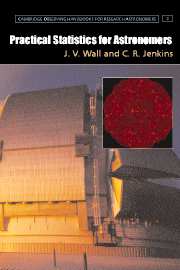Refine listing
Actions for selected content:
17000 results
Part I - Origin of life
-
- Book:
- Exploring the Origin, Extent, and Future of Life
- Published online:
- 29 December 2010
- Print publication:
- 03 September 2009, pp 19-20
-
- Chapter
- Export citation
Frontmatter
-
- Book:
- Exploring the Origin, Extent, and Future of Life
- Published online:
- 29 December 2010
- Print publication:
- 03 September 2009, pp i-vi
-
- Chapter
- Export citation
12 - God, evolution, and astrobiology
- from Part II - Extent of life
-
-
- Book:
- Exploring the Origin, Extent, and Future of Life
- Published online:
- 29 December 2010
- Print publication:
- 03 September 2009, pp 220-242
-
- Chapter
- Export citation
16 - Comparing stories about the origin, extent, and future of life: an Asian religious perspective
- from Part III - Future of life
-
-
- Book:
- Exploring the Origin, Extent, and Future of Life
- Published online:
- 29 December 2010
- Print publication:
- 03 September 2009, pp 303-320
-
- Chapter
- Export citation
List of contributors
-
- Book:
- Exploring the Origin, Extent, and Future of Life
- Published online:
- 29 December 2010
- Print publication:
- 03 September 2009, pp ix-x
-
- Chapter
- Export citation
15 - God's preferential option for life: a Christian perspective on astrobiology
- from Part III - Future of life
-
-
- Book:
- Exploring the Origin, Extent, and Future of Life
- Published online:
- 29 December 2010
- Print publication:
- 03 September 2009, pp 281-302
-
- Chapter
- Export citation
8 - The quest for habitable worlds and life beyond the solar system
- from Part II - Extent of life
-
-
- Book:
- Exploring the Origin, Extent, and Future of Life
- Published online:
- 29 December 2010
- Print publication:
- 03 September 2009, pp 143-166
-
- Chapter
- Export citation
Part II - Extent of life
-
- Book:
- Exploring the Origin, Extent, and Future of Life
- Published online:
- 29 December 2010
- Print publication:
- 03 September 2009, pp 113-114
-
- Chapter
- Export citation
14 - The trouble with intrinsic value: an ethical primer for astrobiology
- from Part III - Future of life
-
-
- Book:
- Exploring the Origin, Extent, and Future of Life
- Published online:
- 29 December 2010
- Print publication:
- 03 September 2009, pp 261-280
-
- Chapter
- Export citation
4 - Philosophical aspects of the origin-of-life problem: the emergence of life and the nature of science
- from Part I - Origin of life
-
-
- Book:
- Exploring the Origin, Extent, and Future of Life
- Published online:
- 29 December 2010
- Print publication:
- 03 September 2009, pp 61-79
-
- Chapter
- Export citation
Contents
-
- Book:
- Exploring the Origin, Extent, and Future of Life
- Published online:
- 29 December 2010
- Print publication:
- 03 September 2009, pp vii-viii
-
- Chapter
- Export citation
5 - The origin of terrestrial life: a Christian perspective
- from Part I - Origin of life
-
-
- Book:
- Exploring the Origin, Extent, and Future of Life
- Published online:
- 29 December 2010
- Print publication:
- 03 September 2009, pp 80-95
-
- Chapter
- Export citation
10 - The search for extraterrestrial life: epistemology, ethics, and worldviews
- from Part II - Extent of life
-
-
- Book:
- Exploring the Origin, Extent, and Future of Life
- Published online:
- 29 December 2010
- Print publication:
- 03 September 2009, pp 186-204
-
- Chapter
- Export citation
7 - A biologist's guide to the solar system
- from Part II - Extent of life
-
-
- Book:
- Exploring the Origin, Extent, and Future of Life
- Published online:
- 29 December 2010
- Print publication:
- 03 September 2009, pp 115-142
-
- Chapter
- Export citation
13 - Planetary ecosynthesis on Mars: restoration ecology and environmental ethics
- from Part III - Future of life
-
-
- Book:
- Exploring the Origin, Extent, and Future of Life
- Published online:
- 29 December 2010
- Print publication:
- 03 September 2009, pp 245-260
-
- Chapter
- Export citation
2 - Emergence and the experimental pursuit of the origin of life
- from Part I - Origin of life
-
-
- Book:
- Exploring the Origin, Extent, and Future of Life
- Published online:
- 29 December 2010
- Print publication:
- 03 September 2009, pp 21-46
-
- Chapter
- Export citation
9 - A historical perspective on the extent and search for life
- from Part II - Extent of life
-
-
- Book:
- Exploring the Origin, Extent, and Future of Life
- Published online:
- 29 December 2010
- Print publication:
- 03 September 2009, pp 167-185
-
- Chapter
- Export citation
Acknowledgements
-
-
- Book:
- Exploring the Origin, Extent, and Future of Life
- Published online:
- 29 December 2010
- Print publication:
- 03 September 2009, pp xi-xii
-
- Chapter
- Export citation
3 - From Aristotle to Darwin, to Freeman Dyson: changing definitions of life viewed in a historical context
- from Part I - Origin of life
-
-
- Book:
- Exploring the Origin, Extent, and Future of Life
- Published online:
- 29 December 2010
- Print publication:
- 03 September 2009, pp 47-60
-
- Chapter
- Export citation

Practical Statistics for Astronomers
-
- Published online:
- 02 September 2009
- Print publication:
- 13 November 2003
